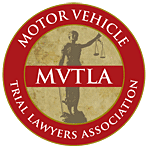So you were travelling down one of the many Connecticut state highways or roadways. It may have been a local road or an interstate such as I 84, I 91 or I 95. A Connecticut DOT truck operator decides to abruptly change lanes and side swipes your automobile while clearing highway snow. Better yet, maybe you were rear ended by a Connecticut State Police Trooper at a traffic light. Finally, maybe as you were travelling on the Merritt Parkway, you came over the crest of the hill and found a DOT truck operator engaged in pot hole repair without prior warning. The net result, you went into a horrific spin out resulting in all kinds of serious personal injuries.
What do you do now? You call our office!
The question becomes can you hold the State of Connecticut liable for the negligence of a state official or employee who causes injury to property or person when operating a motor vehicle owned and insured by the State of Connecticut?
The answer to the question is yes. The authority is Connecticut General Statute 52-556.
Conn. Gen. Stat. 52-556 provides members of the public with a statutory cause of action against the state to recover for property damage and personal injury when a state official is operating an insured motor vehicle owned by the state in a negligent manner. This statute is known as a consent to sue statute.
This statute is a waiver to state sovereign immunity. Therefore, it will often be narrowly construed by the court. The term operating has been defined to mean setting the vehicles operative machinery in motion or moving the vehicle from one place to another. Plante v State, 82 Conn. App. 459 (2004).
The court has further construed "operating" to mean any action incidental to forseeable motor vehicle travel which may include parking if incidental to travel. Hicks v State, 287 Conn. 421 (2008).
However, where a state motor vehicle is being used as a barrier or as some type of warning device, the court may not find that the motor vehicle was being "operated" by an employee under the statute. Hence, the statute may not provide a remedy in that fact scenerio. A classic example of "non operation" may be a DOT truck that is stationary, adjacent or off the highway. The truck may possibly exhibit flashing lights in an effort to provide notice of work being done by the DOT in a different highway location. The truck may not be in motion and not considered to be "operating" under the statute. Futhermore, the truck use may not qualify as incidental to operating. Another example might be a Connecticut State Police cruiser used to shield an officer while the officer is conducting a dangerous highway traffic stop. Any negligent placement of the "shield" cruiser may also create an issue on whether the shield cruiser qualifies as an "operated" motor vehicle.
The statute also does not provide a direct cause of action against the state employee for the state employee's negligence. In fact, Conn. Gen. Stat. 4-165 exempts the state employee for his or her personal negligent conduct. Often, the court will grant the defendant employee a motion to dismiss when a direct action is brought exclusively against the state employee. Woodruff v Hemingway, 297 Conn. 317 (2010).
Whether a state employee is operating a state owned motor vehicle under the above noted statute is often a question of fact for the trial court fact finder.
Actions under Conn. Gen. Stat. 52-556 are controlled by a two year statute of limitations. The attorney general is the proper authorized agent to accept service of process on behalf of the State of Connecticut under Conn. Gen. Stat. 52-64.
The Rotatori Law Firm represents many injured plaintiff'sin claims against the State of Connecticut caused by negligent state employee motor vehicle operators. The Rotatori Law Firm litigates cases in the counties of New Haven, Fairfield, Litchfieldand Hartford.
Contact our Stamford car accident lawyer today for representation all across Connecticut.




